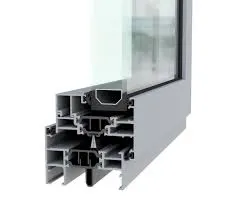rod iron fence parts
Understanding Rod Iron Fence Parts
Rod iron fences, known for their strength and durability, have long been a popular choice for both residential and commercial properties. These fences not only provide security but also enhance the aesthetic appeal of any landscape. To fully appreciate the charm and functionality of a rod iron fence, it’s essential to understand its various parts and components.
1. Posts
The posts are the foundational elements of a rod iron fence. Typically made from strong materials like wrought iron or steel, these vertical supports are spaced evenly along the perimeter and are crucial for maintaining the structure’s stability. Posts are usually anchored deep in the ground to withstand external forces such as wind or impact. When choosing posts, it’s important to consider the height and thickness that will suit your fencing needs.
2. Panels
The panels are the horizontal sections that connect between the posts. They can come in a variety of designs, including simple bars or intricate patterns that add a decorative touch. These panels can also be custom-made to suit specific requirements or personal tastes. The spaces between the bars can vary, enhancing visibility while still providing a reasonable level of security.
3. Gates
A rod iron fence often includes gates, which are essential for providing access to the enclosed area. Gates can be single or double, depending on your needs. Just like the panels, gates can feature various designs, allowing homeowners to maintain a consistent aesthetic throughout their property. Gates should also be equipped with secure locking mechanisms to bolster safety.
rod iron fence parts

4. Pickets
Pickets are the vertical rods that extend upward from the fence panels. They add height and security, preventing unwanted entry while offering a visually appealing aspect to the fence. The spacing and height of the pickets can be adjusted, allowing for flexibility to achieve the desired look and level of privacy.
5. Finials
Finials are decorative tops placed on the posts or pickets. These ornamental elements can come in various shapes, such as spikes or globes, and can enhance the overall appearance of the fence. Choosing the right type of finials can help create a more personalized look, making a fence not only functional but also a key design element in your yard.
6. Bracing
Bracing is an essential component that adds extra stability to the fence. It usually involves diagonal supports that connect the posts and panels, preventing sagging over time. Proper bracing is particularly important for taller fences, as it helps ensure they can withstand pressure from various elements.
Conclusion
A rod iron fence is composed of several critical parts, each serving its unique purpose while contributing to the overall function and aesthetic of the fence. Understanding these components — posts, panels, gates, pickets, finials, and bracing — is key to improving the integrity and style of your property’s fencing. When selecting a rod iron fence, consider how each part aligns with your security needs and design preferences. With the right components, you can create a beautiful, reliable barrier that enhances your property for years to come.
-
Wrought Iron Components: Timeless Elegance and Structural StrengthNewsJul.28,2025
-
Window Hardware Essentials: Rollers, Handles, and Locking SolutionsNewsJul.28,2025
-
Small Agricultural Processing Machines: Corn Threshers, Cassava Chippers, Grain Peelers & Chaff CuttersNewsJul.28,2025
-
Sliding Rollers: Smooth, Silent, and Built to LastNewsJul.28,2025
-
Cast Iron Stoves: Timeless Heating with Modern EfficiencyNewsJul.28,2025
-
Cast Iron Pipe and Fitting: Durable, Fire-Resistant Solutions for Plumbing and DrainageNewsJul.28,2025
-
 Wrought Iron Components: Timeless Elegance and Structural StrengthJul-28-2025Wrought Iron Components: Timeless Elegance and Structural Strength
Wrought Iron Components: Timeless Elegance and Structural StrengthJul-28-2025Wrought Iron Components: Timeless Elegance and Structural Strength -
 Window Hardware Essentials: Rollers, Handles, and Locking SolutionsJul-28-2025Window Hardware Essentials: Rollers, Handles, and Locking Solutions
Window Hardware Essentials: Rollers, Handles, and Locking SolutionsJul-28-2025Window Hardware Essentials: Rollers, Handles, and Locking Solutions -
 Small Agricultural Processing Machines: Corn Threshers, Cassava Chippers, Grain Peelers & Chaff CuttersJul-28-2025Small Agricultural Processing Machines: Corn Threshers, Cassava Chippers, Grain Peelers & Chaff Cutters
Small Agricultural Processing Machines: Corn Threshers, Cassava Chippers, Grain Peelers & Chaff CuttersJul-28-2025Small Agricultural Processing Machines: Corn Threshers, Cassava Chippers, Grain Peelers & Chaff Cutters












